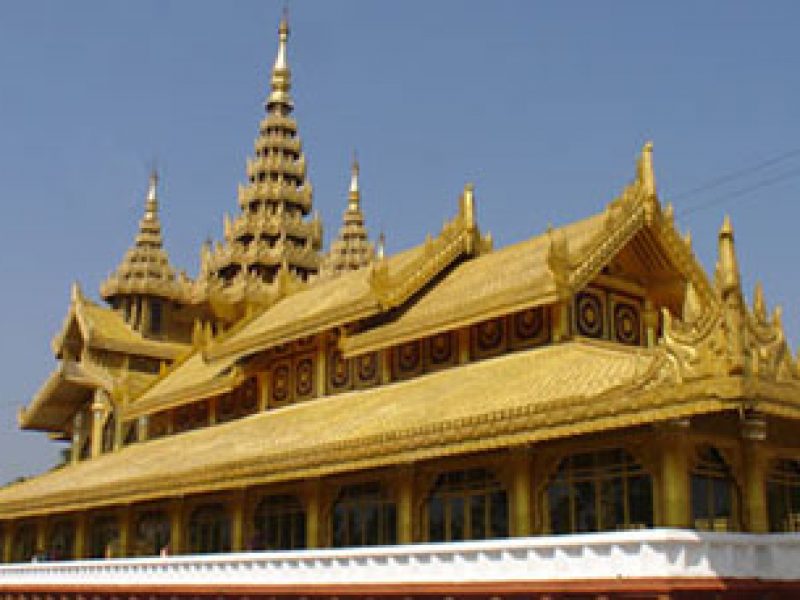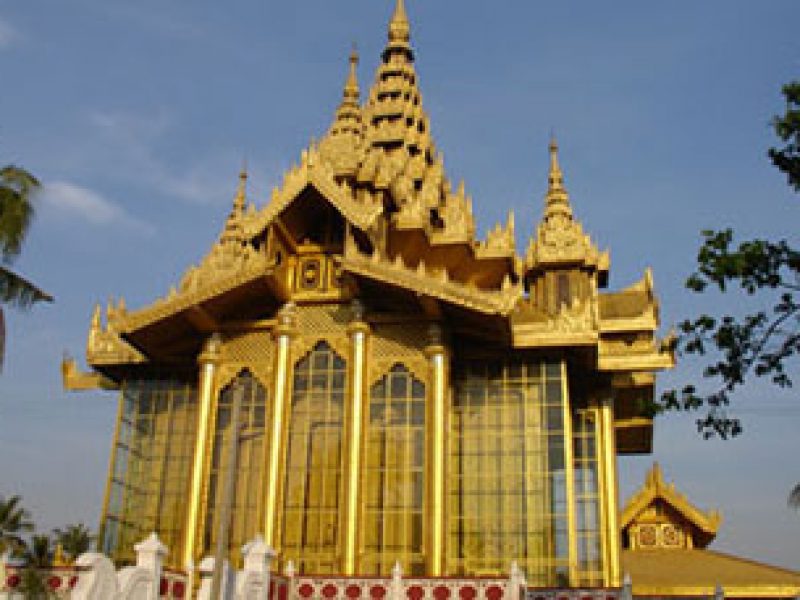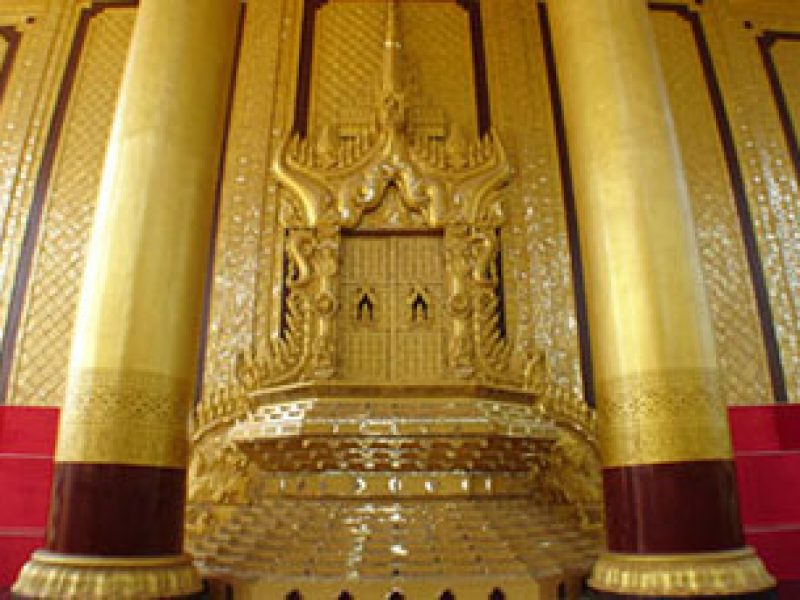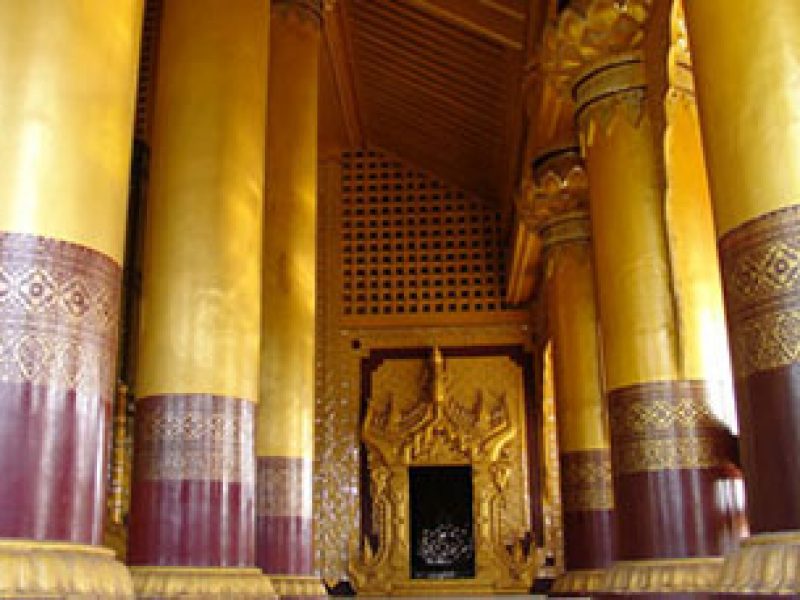Bago is situated about 50 miles north of Yangon. It was the capital city of the Hanthawady Kingdom for many centuries under the Mon and Myanmar monarchs. Bago (or) Ogsa city was a renowned cultural region in lower Myanmar.
If one talks about Bago (or) Ogsa City. he can not leave the King who possessed white elephants. King Bayintnaung who powerful and a great monarch in the Southeast Asian regions.King Bayintnaung who established the 2nd Myanmar Empire was the most popular one among successive Myanmar Kings. After two years he reigned Myanmar in 1553. he built Kambowzathadi Palace which was the heart of Myanmar. After excavating and rebuilding the ancient Kambowzathadi Palace which was existed about 437 years ago. it is grandly emerged as you can see. So. let’s study the significant palace.


In the contemporary European Chronicles written by Italian merchant Caesar Fredaricke and the British merchant Ralph Fitch. stated that the Hanthawadi City was a glorious and magnificent capital. It was a great city built on plain and flat site. The royal palace was at the centre of the new city. The Chamber of the Royal Palace was in grandeur and richly gilded. Some apartments of the palace were roofed with gold plates depicting the magnificence and beauty of the royal palace.
The Hanthawady City was a great commercial centre in the 16th century A.D. King Bayintnaung was more powerful than his predecessors as he could unity the entire Myanmar and its neighbours. He founded the second Myanmar Empire and his military prowess was remarkable among the Southeast Asian leaders. King Bayintnaung reigned the Hanthawady City for thirty years. his demise came in 1581.
The Kambowzathadi Palace remained in ruins for four hundred years. The excavation of Kambowzathadi Palace commenced in 1990 April 25th. This palace site is 67.295 acres wide. Firstly. we excavated mound No (1). It is the site of the main shrine hall. When we excavated the palace site. we discovered about two thousand damaged Buddha images.


Mound No (2) is the site of royal chamber of princess. Her name is Razadatukalya. who was the eldest daughter of King Bayintnaung. Mound No (3) and (4) are the sites of apartments of Chief-queens. We assume mound No (5) as the site of a corridor connecting to mound No (4). the site of chief queen’s chamber and the mound No (6) is the site of the royal bed Chamber called Bee throne hall. This is a Bamayarthanapalin hall. Bee throne hall. which was the King’s living Chamber and bed room as well guarded by his most trusted persons. Apart from very important cases. such as military affairs. coming to here was strictly prohibited to everyone including his queens and female attendants. When we excavated mound No (6) we discovered 64 large teak pillars.
The most important findings at the site of the great audience hall site are 167 teak posts of which 135 were inscribed in Mon and Myanmar languages bearing the names of towns. regions and the royal ministers who brought the large teak posts for the construction of the great audience hall. This is the largest building of the Palace and used as a State Audience Hall. Among the 8 thrones. Thiharthana throne (or) the Lion throne is set inside the building.
The Thihathana throne is made of Yamanay (gmeline abornea) wood. At the top and bottom of two pilasters attached to the upper part of the throne on each side. the figures of 4 celestial beings can be seen. At the top centre piece there is the figures of the Thagyamin (King of the Celestial beings) on whose forehead a legend admonishing the King to rule the Kingdom with justice. is written. That very fact shows that the Thihathana throne is virtually the symbol of national sovereignty.


In the middle of left pilaster there is a figure of a peacock representing the sun and in the middle of the night pilaster is the figure of a rabbit. the sign of the moon. They are depicting that Myanmar monarchs are the descendants of the Sun and the Moon. (Ulestial beings). King Bayintnaung not only built a strong. united and enlarged 2nd Myanmar Empire. but also ruled his Kingdom with justice and the subjects enjoyed peace and prosperity. He encouraged agriculture. trade and commence. Ministers and heroes of various nationalities served under him and they were promoted to high positions. Hteravada Buddhism flourished under his patronage as he made every effort to promote it. Therefore. his people adored and severed him willingly. In that way. king Bayintnaung realized his vision of establishing a strong. peaceful and developed second Myanmar Union.
By observing features of the grand palace. you will notice the amazing architectural designs. that reflect the high traditional cultural and prosperity of that period. The Grand Kambowzathadi Golden Palace represents that Myanmar was independent and sovereign nation standing tall with glory with its more monarchs. religion and culture heritage.
Museum
King Bayint Naung was well-known as the founder of the 16th century Second Myanmar Empire. His palace Kambawza Thardi has been reconstructed to its exact replica. In the compound of the palace exists Nandawya Research Museum where the grandeur of the 16th century Hanthawady Period can be observed. In the Museum. the excavated remaining parts of the original palace’s teak pillars and big teak posts presented by respective noblemen to King Bayint Naung are displayed. In his reign. King Bayint Naung was a very powerful king in South-East Asia.
The 16th century sacred Buddha images revered by King Bayint Naung are also exhibited. They show the high artistic handiwork of ancient Myanma culture.Utensils which includes glazed earthern utensils and potsherd of the Hanthawady Period are also displayed.
Scales and weights used in trade shows the systematic ancient Myanmar economy. Bronze pots and bells are shown and Brahmany coins highlight the monetary system of Hanthawaddy Period. The art of blacksmith can be seen through chopper’s words. axes and iron bars used in building constructions.
Decorated earthernware pipes reflect the living standard of that period while Muttama glazed earthernware jars show the prosperity of the period. The earthernware jars were well-liked by foreign ships which embarked at the Hanthawady Port.
Moreover. the area of the palace. charts and maps which depict the conquest of the King are also honourably displayed.
This visit will reveal the high culture of ancient Myanmar. flourishing of Buddhism and wealth of the nation.

Comment (0)